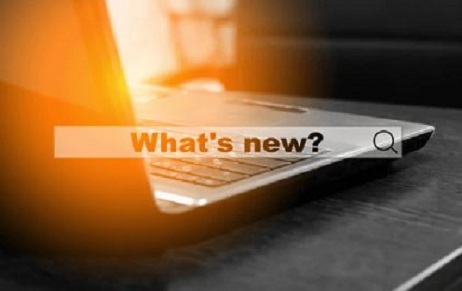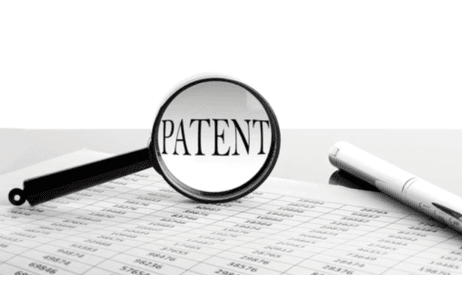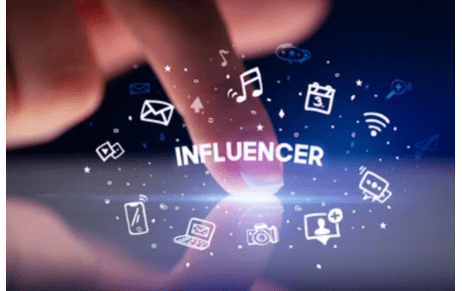Introduction In the realm of obtaining a patent right, conducting a ‘novelty search’ stands as…
Internet of Things: Imminent IP Issues
One of the most heard technology of the present era is Internet of Things (IoT). IoT refers to use of sensors, actuators, and communication technology embedded into physical objects that enable objects to be tracked and controlled over existing networks infrastructures like the Internet.[1] According to a study conducted by McKinsey Global Institute, IoT was identified as rapidly advancing technology area with potential to create economic impact of $2.7 trillion to $6.2 trillion annually by 2025.[2] With high economic impact, there has been an exponential growth in filing of patent applications pertaining to IoT. The worldwide dataset for IoT patents published between 2004 and 2013 contains almost 22,000 published patents with China, USA and Korea dominating the IoT market.[3]
With tremendous amount of patent filing by highly competitive market players such as Qualcomm Inc., Google Inc. and Microsoft Corp., among others, IoT is very likely to become a battleground for patent war in time to come. An emerging intellectual property issue pertains to legal and regulatory concerns for protecting, enforcing, and licensing rights pertaining to IoT devices. IoT patents can be categorized into four technologies, namely, edge nodes, connectivity, data centers, and analytics/applications.[4] Edge nodes include various devices and sensors which receive or collect data, connectivity forms the network infrastructure involving all the communication devices, data centers include servers that receive and store data from the network, and analytics/applications access data from the data centers, analyze it and extract the desired information that can further collaborate with other applications or devices. The patent applications for said four technology areas massively differ in their content.
IoT uses a variety of technologies and thus, development of standards for complex IoT systems becomes a need to ensure appropriate access for all developers and bring wide interoperability to avoid lock-in for consumers. One of the means to avoid patent war is standard development that can be based on transparent and flat-rate licensing schemes or fair, reasonable and non–discriminatory (FRAND) terms. Standardization can allow connection of devices from different sources and can permit the addition of new devices into a network without hampering existing architecture. Recently, Open Connectivity Foundation (OCF) was formed with more than 300 member companies, including Cisco Systems, General Electric, Intel, MediaTek, LG, Haier, Canon and Samsung to develop the standards for IoT ensuring secure interoperability for consumers, businesses and industries.[5] In India, currently, Global ICT Standardization Forum for India (GISFI) is developing standards for IoT.[6]
IoT includes interconnection of numerous devices, thus, there may be a difficulty in drafting of the patent claims. A skilled patent drafter aims to draft patent claims from the point of view of one device only in order to avoid unity of invention objection and divided-infringement issue. However, in inventions pertaining to IoT where there is a large interconnection of devices, this may not be possible. Hence, a proper approach is required while drafting patent claims for IoT technologies.
Also, in a massively distributed network connecting wide range of devices where multiple parts of a network are owned by multiple entities, finding a single infringing entity as well as jurisdiction, in case of patent infringement, becomes a tedious task. For example, if server of a IoT network is located in China, IoT device is located in USA and the user is located in India where all the parts of IoT network are owned by different entities, it becomes difficult to establish a single entity who is directly infringing the patent. Also, in another scenario, if a mishap happens because of artificial intelligence or software bug in the IoT device, it becomes difficult to establish a case against a specific entity.
In Centillion Data Systems, LLC v. Qwest Communications International, Inc. et al.[7], the United States Court of Appeals for the Federal Circuit considered an issue whether a system claim can be infringed when one party is not in possession of the entire system. The decision of the Court depended on the definition of “use” of the claimed system. According to the Court, the “use” of a claimed system can be construed at a place at which the system as a whole is put into service. Thus, the court held that to ‘use’ a system for purposes of infringement, a party must put the invention into service, i.e., control the system as a whole and obtain benefit from it. The court noted that “to ‘put the system into service,’ the end user must be using all portions of it,” and that direct infringement by use of a system requires that a party use each and every element of a claimed system. However, in IoT technologies pertaining to large network of devices, it would be very difficult to establish “system as a whole” for direct infringement. Thus, it would be interesting to see what path the Court will follow for the battle of IoT Technologies.
In view of the forgoing, another issue which comes up in IoT era is the concern pertaining to data privacy and data security. When multiple devices are included in a network, it becomes difficult to analyze what data is being collected and who is using the information, thus, increasing the possibility of data leakage. In the absence of proper security, customers as well as IoT providers may face disastrous consequences. IoT security requires a multipronged approach and collaboration between device manufacturers, enterprises, and consumers to implement data protection and security solutions in order to secure high value sensitive data assets such as personally identifiable information, payment card information, sensitive employee information and the like. A solution to this concern could be drafting contracts which are clear with respect to gathering, anonymizing, notifying, and using customer data in an IoT environment. [8]
Another issue that stands in way of patentability of IoT technologies is the subject-matter eligibility of the invention. This is because IoT technologies vastly include software applications based on data analytics, data evaluation, data mining and the like. Alice[9], laid a two-step test to analyze subject matter eligibility according to which, (i) the claims at issue should not be directed to patent-ineligible concepts (abstract idea, law of nature, mathematical formula); and (ii) if the claims are directed towards patent-ineligible concepts, the claims should recite additional elements that amount to significantly more than the judicial exception. Post Alice, there have been a number of cases that laid out various examples of technologies that can pass the test of subject matter eligibility.
In DDR Holdings v. Hotels.com[10], Court upheld the validity of computer-implemented patent claims pertaining to webpage display technology. According to the Court, “the claimed solution is necessarily rooted in computer technology in order to overcome a problem specifically arising in the realm of computer networks.” In Enfish v. Microsoft[11], the claims were directed to a specific improvement to the way computers operate, embodied in the claimed “self-referential table” for a database, which were held to be valid. In McRO Inc v. Bandai Namco Games America [12], McRO demonstrated an alternative process for automatically animating lip synchronization and facial expressions. According to the Court, the structure of the rules as claimed in claim limitations reflects a specific implementation not demonstrated as that which “any [animator] engaged in the search for [an automation process] would likely have utilized.” In Amdocs v. Openet Telecom.[13], the Court upheld the patent eligibility of four patents on a system designed to solve an accounting and billing problem faced by network service providers. Each patent described the system that allows network service providers to account for and bill for internet protocol (“IP”) network communications. The system included network devices, information source modules, central event manager, central database, user interface server and terminals. According to the Court, on even assuming that the patents were directed to the abstract idea of using a database to compile and report on network usage, nonetheless the patents were eligible to be patented because they contained an “inventive concept”—a combination of elements that was sufficient to ensure that the patents amounted to significantly more than a patent on the ineligible concept itself. In view of these recent judgments, there is a light of hope that the IoT technologies would pass the test for subject matter eligibility.
As IoT world will continue to develop, while dealing with intellectual property, the companies should keep in mind all these imminent issues in order to form an efficient IP strategy to follow best practices for developing their patent portfolios. It would be interesting to see if the companies file big patent suits against each other or take a path of forming alliances for licensing their technologies.
[1]Internet of Things: Patent Landscape Analysis, LexInnova, http://www.wipo.int/edocs/plrdocs/en/internet_of_things.pdf
[2] Disruptive technologies: Advances that will transform life, business and the global economy, May 2013, McKinsey Insights and Publications
[3] Eight Great Technologies, The Internet of Things, A patent overview, UK Intellectual Property Office Informatics Team August 2014, https://www.gov.uk/government/uploads/system/uploads/attachment_data/file/343879/
informatics-internet.pdf
[4] Supra Note 1
[5] OPEN CONNECTIVITY FOUNDATION (OCF), https://openconnectivity.org/
[6] http://www.gisfi.org/workinggroups.php?wg=IoT
[7] Centillion Data Systems, LLC v. Qwest Communications International, Inc. et al., Nos. 10-1110, -1131 (Fed. Cir. Jan. 20, 2011)
[8] The security of things: Data protection in today’s IoT world, http://internetofthingsagenda.techtarget.com/blog/IoT-Agenda/The-security-of-things-Data-protection-in-todays-IoT-world
[9] Alice Corp. v. CLS Bank Int’l, 134 S. Ct. 2347 (Supreme Court 2014)
[10] DDR Holdings, LLC v. Hotels.com, L.P. 773 F.3d 1245 (Fed. Cir. 2014)
[11] Enfish, LLC v. Microsoft Corp., 822 F.3d 1327 (Fed. Cir. 2016)
[12] McRo, Inc. dba Planet Blue v. Bandai Namco Games America, Inc., Case 15-1080 (Fed. Cir. 2016)
[13] Amdocs (Israel) Ltd. v. Openet Telecom, Inc., No. 2015-1180 (Fed. Cir. Nov. 1, 2016)
About the Author: Ms. Prigya Arora, Patent Associate at Khurana & Khurana, Advocates and IP Attorneys. Can be reached at [email protected]



